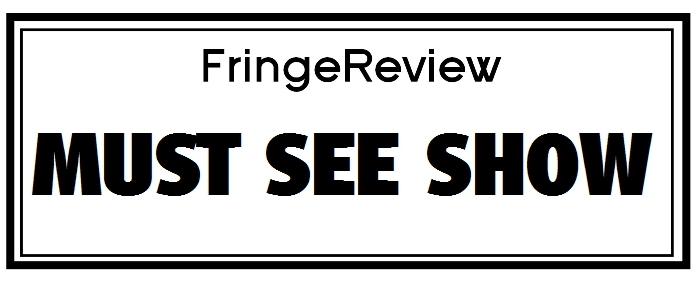FringeReview Scotland 2019
Thank You Very Much
National Theatre of Scotland/ Manchester International Festival/ Perth festival/ Tanzhaus nrw/ Dance Umbrella

Genre: Contemporary, Dance and Movement Theatre
Venue: The Couper Institute, Glasgow
Festival: FringeReview Scotland
Low Down
As a 16 year old, choreographer Claire Cunningham, caught an old clip on TV of an iconic figure, who, by then, in his Las Vegas and declinign years, was a shadow of his image. She was entranced by this image of a highly talented young man whose body language was dangerous where he was with incredible musicians showing that he was an incredible singer. It began a fascination that led to the show before us with the ideas of stereotypes and how we respond, at its heart as four dancers – Dan Daw, Tanja Erhart, Vicky Malin and Claire herself – recount tales of learning trademark moves from Elvis impersonators, not least likely to be stereotyped themselves, with whom they trained before showing off those resplendent moves in an inimical style that challenges such lazy interpretations of bodies. Each section takes each dancer and they recount the training alongside their own stories of growing up and juxtapose the experiences of becoming adults whilst being disabled and then dancing with the ease and majesty of a King. They blow away any expectations we have of perfection, through the removal of the cliched, easy dismissal of an iconic figure like Elvis and replacing it with a timeless anticipation of their every move. We end with a song where we support their leaving the stage in a rendition of an Elvis classic where all we have to do is hold the microphone, uh – huh and thank you very much…
Review
There was a lot of wonderful audience interaction in the evening where we saw people mopping up split water, asking questions onstage to allow performers to respond and get the laughs or to follow performers from one side to the other whilst holding a microphone to keep their words heard to be heard around us all; such is the trouble that it takes to be inclusive with bipeds. Overall that was where the barriers, for me, began to fall down and I could reflect on our presence and participation. There is little doubt that each performer has the ability to command a stage and keep us enthralled with their movement, what was even more interesting artistically was that the challenge to push the boundaries fell over the footlights, stumbled into our laps and we took the opportunity to truly begin to unravel prejudice. Of course being in a space that is not a traditional theatre space but one resplendent in its community helped the feel; but once it is teed up, it has to be delivered.
The structure of the piece which is largely autobiographical times four was an artistic insight. It was more than biographical and testimonial; it was a highly effective mirror held up to us. We may never (though some in the audience have) have had to face the challenges each performer has but the insight given to illustrate why they have become who they are was delivered in a beautifully nuanced manner.
The connection to Elvis was ever present and the whole event seamlessly integrated each performer’s story into a whole that managed to keep us enthralled. The only area where I felt a little less than engaged was the ending. There was a point when all four ended up silent on their lit stage and I thought there was the point to snap the lights and finish. It then found new opportunities and brought itself back to life which I initially thought a mistake until the end song and that was the point at which I realized it was needed, to leave the stage as an impersonator might.
The use of the audience to pass the microphone was something that worked on the evening that I saw it but wondered if a Thank You Very Much refusals half way through might cause it to falter slightly but the momentum of let’s help out here seemed to carry that effect – was it a group ganging ironically up on an individual thing?
Elvis and music is never to be dissed and here they have a reverence to which is added the voices of the impersonators who each bring a different perspective to their art. It’s tempting to dismiss them as copycat sideshows but here, given who we are watching it is brilliant to see how their artistry becomes a very creative springboard upon which are based wrong assumptions – the connection was never lost.
Overall, I left feeling very much that I had not only seen inside the struggles of those who we see as less able than ourselves but also had an insight into the impersonators. Ironically their absence made their presence stronger as it was used with pride and reverence to unlock the prejudices of which we should be all too aware.


















































